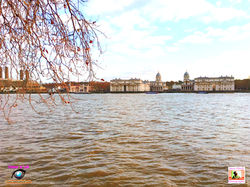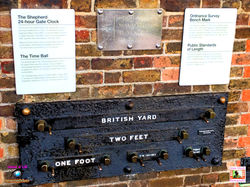top of page

Greenwich is famous for Iconic views, a mix of 17th century landscape, stunning gardens and one of the four Maritime World Heritage Sites in London. Greenwich Park has something for Astronomy enthusiastic. Greenwich is where eastern and western hemispheres meet, also a UNESCO World Heritage Site
 Majestic Greenwich from the other bank of river ThamesGreenwich is notable for its maritime history and for giving its name to the Greenwich Meridian (0° longitude) and Greenwich Mean Time. |  Majestic Greenwich from the other bank of river ThamesFamed for giving its name to Greenwich Mean Time, Greenwich is where hemispheres meet and is home to a World Heritage Site |
|---|---|
 Old Royal Naval CollegeThe centrepiece of the Maritime Greenwich World Heritage Site, the classical buildings of the Old Royal Naval College were designed by England’s greatest architects and are considered amongst the finest in Europe |  Old Royal Naval CollegeIn an age of world wars and developing technology, the Royal Naval College provided state-of-the-art training for promising young officers. It would also see thousands of Wrens trained here during World War II. The Navy left in 1997, and the Old Royal Naval College is open for the public to visit. |
 Old Royal Naval College |  Old Royal Naval College |
 Old Royal Naval College |  Old Royal Naval College |
 The Royal ObservatoryThe Royal Observatory is Britain’s oldest scientific institution. It was founded in Greenwich by King Charles II in 1675 for perfecting the art of Navigation. |  The Royal ObservatorySince the late 19th century, the Royal Observatory is the historic source of the Prime Meridian to the world, Longitude 0° 0' 0''. The world prime meridian marks the divide between the eastern and western hemispheres. |
 Before It, There Was No Standardised Method For Measuring TimeBefore the Observatory, there was no standardised method of measuring time, which could be very, very confusing. Standardised time was essential for navigation so that mariners were able to measure their distance from the Prime Meridian in Greenwich. In the 19th Century, mariners start relying on Greenwich and helped GMT to become a universal standard for decades. |  The Royal ObservatoryGreenwich observatory is home to the Prime Meridian Line, the UK’s largest refracting telescope, a 4.5 billion-year-old asteroid and the only London planetarium |
 The Royal Observatory |  The Royal Observatory |
 Prime MeridianThe meridian line in Greenwich represents the Prime Meridian of the world, Longitude Zero (0° 0' 0"). Every place on the Earth is measured in terms of its angle east or west from this line. |  Why does the Prime Meridian run through Greenwich?There were two main reasons for this choice. The first was the fact that the USA had already chosen Greenwich as the basis for its own national time zone system. The second was that in the late 19th century, 72% of the world's commerce depended on sea-charts which used Greenwich as the Prime Meridian. |
 The Standards of MeasurementThe Royal Observatory Greenwich features a set of Public Standards of Length. Marked out by brass pegs, these measurements set out the exact length of different imperial measurement units, including a yard and a foot. |  The Standards of Measurement |
 Discover Greenwich visitor centre |  Discover Greenwich visitor centre |
 National Maritime MuseumThe museum includes a gallery of special exhibitions, including a permanent gallery "Voyagers" which introduces the story of Britain and the sea. The museum was declared a UNESCO World Heritage Site in 1997. |  A View of London from Greenwich Park |
 Spectacular sunset over the city of London |
bottom of page